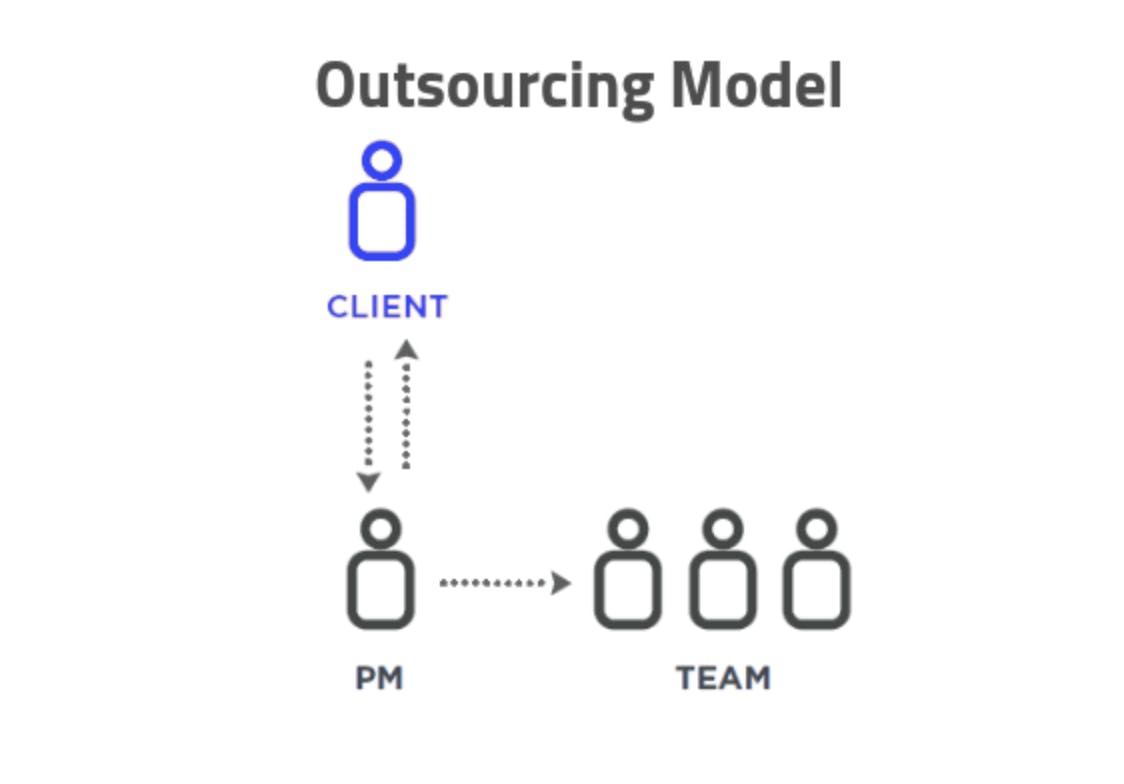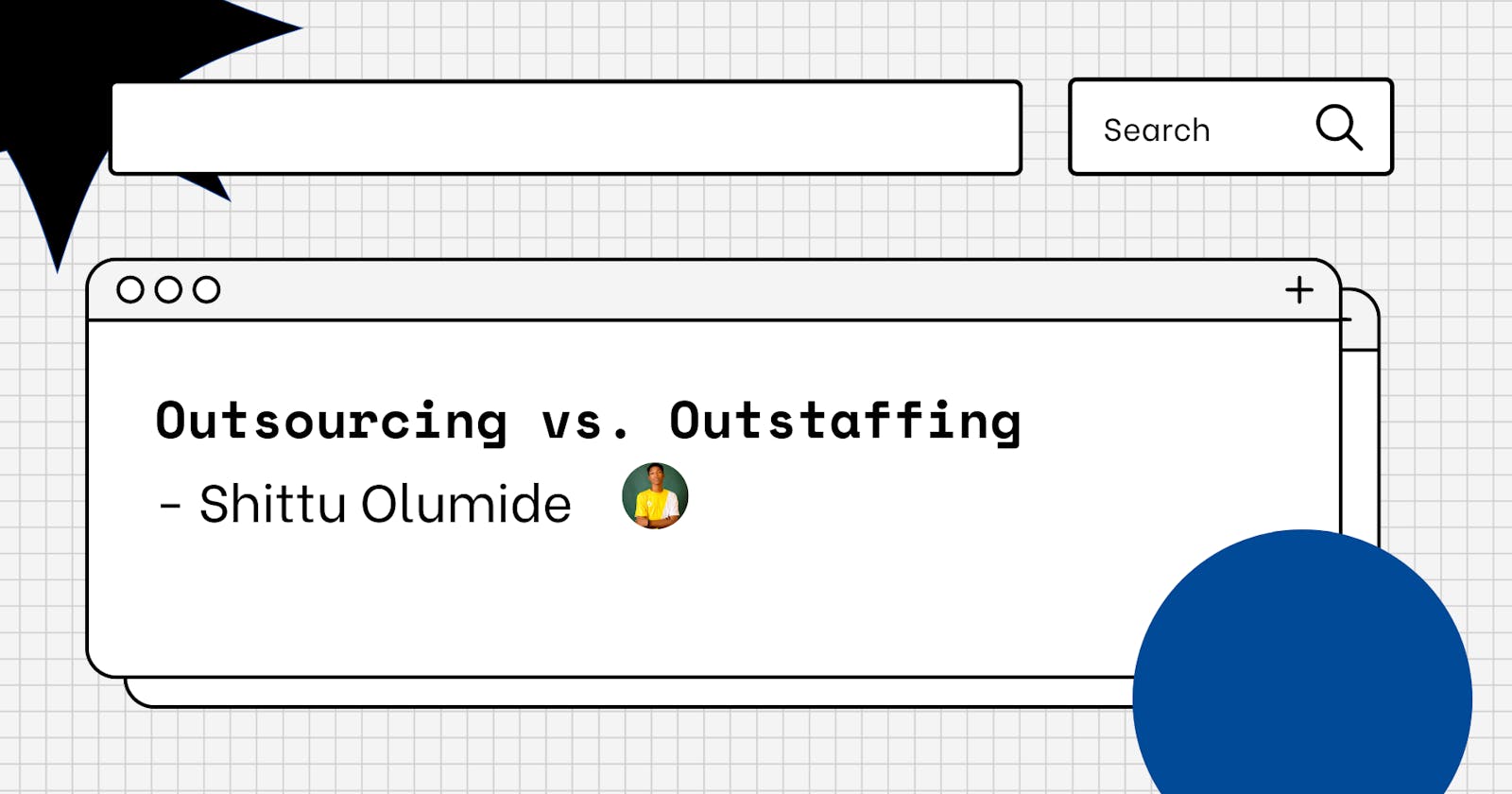Overview
When you want to work in software development, a popular question is which is preferable between IT outsourcing and IT outstaffing. We must examine each model in depth to determine which situations call for outsourcing and which call for outstaffing in order to provide answers to these queries.
It might be difficult to find skilled IT specialists. Due to the high demand for skilled individuals in a small talent pool, IT jobs are among the hardest to fill. Many businesses choose to outsource or “outstaff” their projects rather than create an inside crew. Which works better, and why does outsourcing go wrong so frequently? Depending on the project and company, the answer might change.
For your convenience in this article, we will compare and contrast outsourcing and outstaffing and leave you to decide which one is right for your business.
Outline:
- What is outsourcing?
- Advantages of outsourcing.
- Disadvantages of outsourcing.
- What is outstaffing?
- Advantages of outstaffing.
- Disadvantages of outstaffing.
- Decision making.
Let’s take it once after the other and ease gently into it.
What is outsourcing?
Employing a third party from outside a corporation to carry out tasks or produce commodities that were previously completed internally by the organization’s own staff members is known as outsourcing. Businesses regularly employ outsourcing as a way to reduce costs. Because of this, it may have an impact on a variety of occupations, including manufacturing, back office jobs, and customer service.

Outsourcing became officially recognized as a corporate strategy for the first time in 1989, and it continued to play a significant part in company economics throughout the 1990s. Outsourcing is a technique that has caused a lot of controversy in many countries.
The claim made by those opposed is that it has resulted in a decrease in domestic employment, particularly in the manufacturing sector. Proponents of outsourcing claim that it encourages businesses and organizations to invest money where it will be most valuable and upholds the principles of free-market economies on a global scale.
Example: A small business may decide to outsource bookkeeping duties to an accounting firm in order to save money as opposed to retaining an internal accountant. A personal computer company might acquire internal components for its products from other companies to save production costs. A legal firm may use digital technology without having to spend a lot of money on its own by using a cloud computing service provider to store and back up its data.
Advantages of outsourcing
Without a doubt, outsourcing offers more advantages than disadvantages. The incidence of outsourcing has grown globally as a result of this tendency. Outsourcing’s primary goal is to lower gross expenses while allowing you to handle your company’s resources more skillfully.
Code quality is the vendor’s responsibility. Vendors should be in charge of quality control and making sure that the provided coding complies with your project’s specifications. You are not expected to deliver any daily management outputs at the customer level. That’s a major benefit.
There is no requirement for ongoing management. Vendors deliver turnkey services. They coordinate resources among all the IT specialists working on your project, including both their in-house staff and your internal team. They oversee communication, deliverables, quality control, and schedules.
Your vendor handles human resources. Do you need more staff members? More or less, perhaps? They are responsible for scheduling, hiring, and paying taxes, wages, and benefits for employees, among other things. Only receive the help you need when you need it.
There is no requirement to purchase equipment or software. Your outsourced IT employees will need gear and software to perform your projects, but these expenditures won’t show up on your expense ledger. All of those expenses will be your vendor’s responsibility and will undoubtedly be included in their estimate for working with you.
There is a larger, more versatile range of resources at your disposal. It is simpler for your vendor to send in a range of experts for simply an hour or two when you outsource your project. You must use the resources you have since when you outsource, the vendors you engage are subject to your company’s work in the same manner that a full- or part-time employee is. The freedom that outsourcing offers is a key selling point for many clients.
Disadvantages of outsourcing
The process of development is not entirely under the customer’s control.
As opposed to hiring outside help, outsourcing costs more. There is a price for all of that management and turnkey service. Not only the understaffed IT employees but also the project management team tasked with looking after your account as part of an outsourcing deal must be paid for by the hour. For smaller jobs, many suppliers may charge you more per hour, but if they anticipate working with you again on bigger projects in the future, they will lower their pricing.
Continuous quality control and monitoring of whether everything goes according to plan.
What is outstaffing?
In this model, a software firm employs and maintains a development staff that is entirely under your control. In essence, you recruit a remote team to supplement your in-house workforce and treat them as your own workers rather than contractors. Your internal staff members can oversee this larger workforce, or you can even engage a remote manager.

While a client firm gives a worker duties and assignments, the latter serves as an employer and is therefore in charge of paying salary, bonuses and providing equipment to a worker. Outstaffing includes hiring a faraway full-time or part-time expert who will work as a temporary member of your in-house team. This method enables you to hire any software development professional or a group of them, depending on the needs of your project. On the other side, outsourcing calls for project management on your part.
Advantages of outstaffing
- Outstaffing makes it possible to recruit excellent specialists without incurring excessive costs and taxes.
- Outstaffing has full control over the software development process.
- It has major flexibility in the number of devoted workers you recruit, either up or down.
- Outstaffing comes with full access to any member of the team.
- Compared to other company models, outstaffing has the lowest costs.
Disadvantages of outstaffing
- Failure to create efficient channels of communication Because vendor employees frequently work separately, if not remotely, from the rest of your team, effective communication channels are essential.
- Adoption procedures for new hires and micromanagement.
- The customer and his team are responsible for the work’s quality and delivery.
Decision making
You now have two alternatives, and both business models may help your company grow and accomplish its objectives. Everything depends on your goals and desired amount of control. If your company doesn’t have any in-house software developers and you need to start the project from scratch, think about outstaffing as a solution. Outsourcing is ideal, if you simply need someone with a certain set of skills or if you’d rather manage the development process yourself.
If your company does not place a high priority on technology and lacks the staff to manage or employ skilled people for tech activities, go for outsourcing. A software outsourcing company can assist if you require support with a standalone, unique software project. You may always use a non-disclosure agreement(NDA) if you’re concerned about data leaks.
An outstaffing company will be your best option if you wish to recruit people on a project-by-project basis. This strategy works best for companies with capable project managers and/or guiding partners.
Conclusion
We covered a substantial amount of ground in this article, so I hope you took something away from it. I highly suggest you to take some time to sit down and carefully analyze which model will work best for your company, startup, or business after reading this post and understanding the advantages and disadvantages of each model. Then go ahead and execute it, remembering that both models are totally efficient and will definitely provide results.

